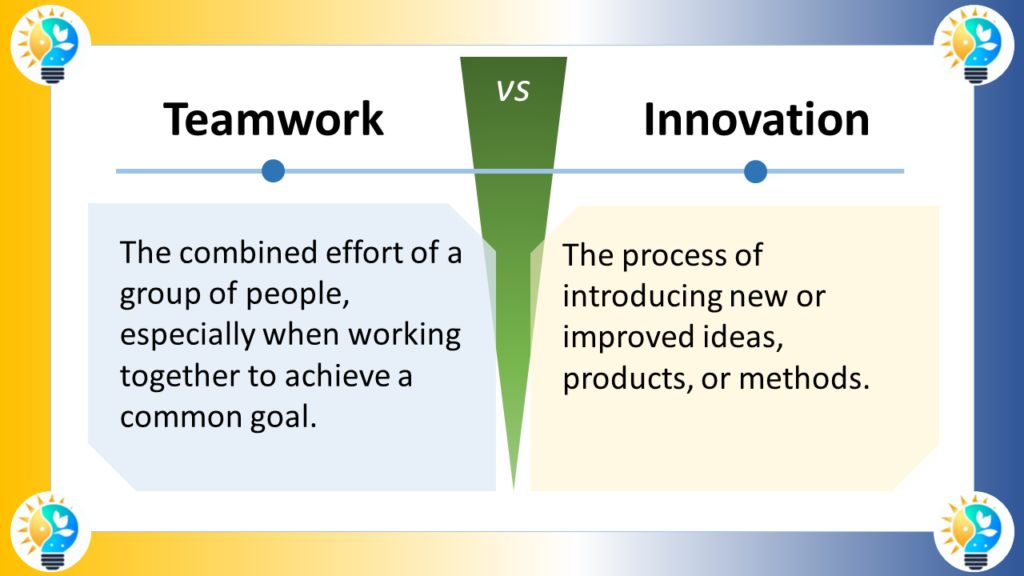When discussing innovation, it helps to contrast it with opposite notions.

In a world driven by progress and transformation, innovation stands as the driving force of change. But have you ever wondered about its counterpart, the antithesis of innovation?

Innovation is considered as a driving force in progress.
It includes the introduction of novel ideas, methods, or products that bring positive change and advancement.
For more information about innovations, check our glossary
We will first define innovation before tackling exnovation, negative, reverse, and dark innovation.
What is Exnovation?
Exnovation is the process of removing existing technology, product, or service. Some key things to know about exnovation.
- It is the opposite of innovation, which introduces something new. Exnovation removes or eliminates something existing.
- This can free up resources for more promising opportunities. Companies should exnovate technologies, products or services for the following: obsolete, unprofitable, dangerous or not aligned with their current business strategy.
- Exnovation helps transitioning away from legacy systems or old ways of doing things. They are holding back organizations and prevent them to compete. Organizations can then better focus on innovation.
- Done well, exnovation is a strategic process rather than just randomly discarding things. Organizations determine what to remove. They should assess factors like customer needs, profitability, compliance and future vision.
- Exnovation challenges organizations to critically examine themselves. They should prune away anything that is not adding real value. This prevents bloat and refocuses efforts on areas with the most potential.
- It is a form of creative destruction that allows for new innovation and progress. By removing outdated elements, exnovation helps create space for new growth.
What is Negative Innovation?
Innovation can also be counterproductive!
Companies worldwide invest significant resources in research and development. They strive to stay ahead of the competition by introducing products and services. However, a lesser-known side to innovation – negative innovation – can be equally impactful.
Defining Negative Innovation
Negative innovation is sometimes referred to as counterproductive innovation.
Innovation aims traditionally to create positive change and value for businesses and society. Yet it can produces negative outcomes, that is detrimental, wasteful, or harmful.
Negative innovation encompasses various aspects, including:
1. Innovation for the Sake of Innovation: Companies pursue innovations without a clear understanding of their potential benefits. Then products are offered with little to no market demand or utility.
2. Unintended Consequences: Even well-intentioned innovations can have unintended negative consequences. For instance, the rapid adoption of social media platforms has led to concerns about privacy, mental health issues, and the spread of misinformation.
3. Wasteful Innovation: Investing heavily in innovation without achieving meaningful results can be wasteful. Companies constantly pivot or even chase the latest trends. Their resources are then burnt through without generating value.
The Paradox of Negative Innovation
Negative innovation presents a paradoxical challenge for innovation managers.
On one hand, it can lead to valuable lessons and insights. On the other hand, it can be costly and detrimental to an organization’s reputation and bottom line. Here are some key considerations for innovation managers:
1. Balancing Risk and Reward: Innovation inherently involves risk-taking. A balance must be found between encouraging experimentation and aligning with strategic goals.
2. Learning from Failure: Valuable lessons should be learnt about what doesn’t work. It’s essential to create a culture that encourages first learning from failure. Then, and applying those lessons to future endeavors.
3. Ethical Considerations: Ethical dilemmas can arise when innovation leads to unintended harm. Innovation leaders should check ethical guidelines. They should consider the potential consequences of their initiatives.
Case Studies in Negative Innovation
To better understand negative innovation, let’s explore a few real-world examples:
1. Segway
The Segway was touted as a revolutionary personal transportation device. Yet it failed to gain widespread adoption due to its high price and limited practicality. Note that innovation leaders should consider market demand and affordability.
2. Google Glass
Google Glass was an attempt to introduce augmented reality glasses to the mass market. It faced significant privacy concerns. The following public backlash lead to its eventual discontinuation. This example highlights the importance of addressing ethical concerns in innovation.
Turning Negative Innovation into Positive Outcomes
Innovation leaders can turn these challenges into positive outcomes by:
1. Iterative Innovation: Organizations can pivot from negative outcomes to positive ones. They would need first to adapt their innovation strategies. Then, encouraging a culture of continuous improvement can help.
2. Market Research: Market research and customer feedback can help identify potential pitfalls early. Innovation leaders can then to course-correct early before they become major issues.
3. Ethical Frameworks: Ethical frameworks must be developed to help organizations facing ethical dilemmas. This is relevant with innovation on new technologies and products.
Video Explainers
What Are The Negative Risks of Innovation | John Manners Bell
What is Reverse Innovation?
Traditionally, innovation has flowed from developed markets to emerging ones. However, a paradigm shift known as “reverse innovation” is reshaping the innovation landscape.
Understanding Reverse Innovation
Reverse innovation is also referred to as “innovation in emerging markets”. It is a concept that challenges the conventional flow of innovation.
Reverse innovation describe innovations that start in emerging markets. Then, they find applications in developed ones.
This approach has gained traction for several reasons:
1. Market Opportunities:
Emerging markets represent vast untapped potential. Reverse innovation allows companies to address their unique needs and preferences. This may lead to new revenue streams
2. Cost Efficiency: Developing innovations in emerging markets can be more cost-effective. It enable companies to experiment and iterate with lower financial risks.
3. Global Competitiveness: Companies operating in both developed and emerging markets can gain a competitive edge. They can quickly adapt to changing global market dynamics.
Real-World Examples of Reverse Innovation
Let’s explore some compelling examples of reverse innovation in action:
1. General Electric’s MAC 400 ECG Machine:
India faces healthcare challenges in rural areas. General Electric (GE) recognized the need for affordable and portable electrocardiogram (ECG) machines. They produced a low-cost, battery-operated ECG machine designed for rugged conditions (MAC 400). This innovation initially transformed healthcare in India. It then found applications in developed countries, such as Australia and Canada..
2. Tata Nano:
The Tata Nano is manufactured by Tata Motors, an Indian automaker. It is often referred to as the “world’s cheapest car”. This innovation was developed for the transportation needs of the masses in India. In India, the Nano’s concept of affordability and simplicity faced challenges . Furthermore, it inspired other carmakers to explore similar offerings. They were aimed at budget-conscious consumers in developed markets.
3. M-Pesa:
M-Pesa originated in Kenya and is a mobile money transfer service. It aims to provide financial services to the unbanked population. This innovation revolutionized the way people manage money and conduct transactions. It gained global recognition, leading to similar services in developed markets. It highlighted the potential for financial inclusion through mobile technology.
Key Considerations for Innovation Leaders
Innovation leaders can leverage reverse innovation but must consider several critical factors:
1. Market Insights:
Deep market research is essential to understand the unique needs and challenges of emerging markets, as well as how innovations can be adapted to developed markets.
2. Collaboration:
Partnerships and collaborations must be built with local experts and stakeholders. They are instrumental in the success of reverse innovation initiatives.
3. Regulatory Compliance: Navigating regulatory differences between markets is crucial. It ensures the legal and ethical deployment of innovations.
Video Explainers
Video Explainers
Creating New Products for Emerging Markets
What is Reverse Innovation?
TEDxBigApple – Vijay Govindarajan – Reverse Innovation
Conclusion
Reverse innovation is a transformative concept that challenges traditional innovation models. It allows companies to tap into the vast potential of emerging markets.
What is dark innovation?
Innovation has long been associated with progress, growth, and positive change.
However, there’s another side to innovation that often goes unnoticed – dark innovation.
Understanding Dark Innovation
Dark innovation describe innovative efforts that have the potential for significant negative consequences. Conventional innovation focuses on creating value and improving products or services. Dark innovation takes a different path.
It may involve unethical practices, harmful technologies, or innovations that undermine societal well-being.
Dark innovation encompasses various aspects, including:
1. Unethical Practices:
Dark innovation can involve actions that violate ethical norms and principles. This might include deceptive marketing, data exploitation, or product manipulation.
2. Harmful Technologies: Innovations developed in areas like weaponry, surveillance, or addictive technologies. They may be dark innovation due to their potential for harm.
3. Societal Disruption: Innovations that disrupt societal norms and stability. For instance, the rapid automation of jobs, can have dark implications.
Recognizing the Shadows
Innovation leaders must be vigilant in recognizing dark innovation within their organizations. This can be challenging because it often disguises itself as legitimate innovation. Here are some signs to watch out for:
1. Lack of Ethical Consideration: Dark innovation often disregards ethical concerns. They also tend to focus solely on short-term gains.
2. Secrecy and Hidden Agendas: Dark innovation initiatives may be shrouded in secrecy. It is then difficult for others to assess their true intentions and consequences.
3. Resistance to Scrutiny: Those involved in dark innovation may resist external scrutiny. They avoid transparency.
Navigating the Ethical Quandary
Innovation managers are tasked with the delicate responsibility of balancing innovation and ethics. Here’s how they can navigate the ethical quandary posed by dark innovation:
1. Establish Ethical Frameworks: Develop and promote clear ethical guidelines and principles. They should be used for innovation within the organization.
2. Encourage Ethical Discussions: Create a culture that encourages open dialogue about ethical considerations.
3. Regular Ethical Audits: Conduct regular audits. They should assess the ethical implications of ongoing innovation initiatives.
Case Studies in Dark Innovation
Let’s explore a few real-world examples of dark innovation:
1. Social Media and Mental Health:
Some social media platforms have developed addictive design features. They have been linked to negative effects on mental health. These platforms have driven innovation in connectivity. Yet they also raise ethical concerns about their impact on users.
2. Surveillance Technologies:
The development of advanced surveillance technologies for governments and corporations raises concerns about privacy invasion and potential misuse, highlighting the dark side of technological innovation.
What is not innovation?
Not everything that claims to be innovation truly lives up to the title. There is certainly some subjectivity, so in doubt we should refer to The Oslo Manual list the changes that are not innovation.
All the antonyms Of Innovate, Innovation & Innovative

TO NOTE
- The opposite of innovation encompasses terms like: stagnate, close down, abort, relinquish, quit, stymie, quell, decline, reject, and eliminate. These denote a lack of growth, development and forward momentum central to innovation.
- Dark innovation involves unethical practices, harmful technologies or disruptions that undermine societal well-being.
- Reverse innovation refers to innovations starting in emerging markets. They then move to developed ones, challenging the conventional flow of ideas.
- Negative innovation produces outcomes that are detrimental, wasteful or harmful.



